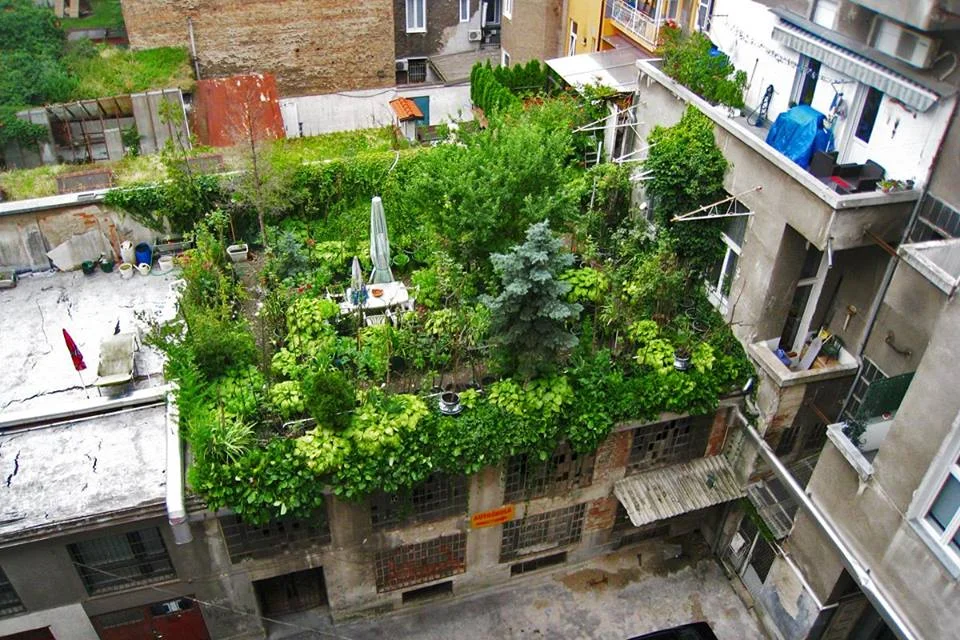Rewilding to Reduce Pollution (Diptanu Chaudhuri)
Originally posted as "8 Ways Your Roof Can Help Tackle Delhi's Pollution" (on youthkiawaaz, 2016).
###
We can fight air pollution in Delhi by introducing rooftop plantation all over the capital. This will help us to create a fresh, pollution-free environment especially in cities over polluted and gasping cities like the national capital. In fact, I feel the law should make such environmental gestures like rooftop plantation mandatory in Indian cities.
Birds, butterflies and various insects perish as their natural habitat dwindles rapidly. Rooftop plantation will bring back such natural beauty which is no longer seen in the polluted cities of the world.
For example, Tulsi has tremendous environmental benefits as it purifies the air around it. Tulsi gives out oxygen for 20 hours and ozone for four hours a day along with the formation of nascent oxygen which absorbs harmful gases like carbon monoxide, carbon dioxide and sulphur dioxide from the environment.
According to the Indian government, 80 people die every day from air pollution in Delhi. Environment minister Prakash Javadekar disclosed the alarming figure in a written response in the Rajya Sabha. Delhi has turned into a pollution zone so deadly that children in the capital have the lungs of ‘chain-smokers‘, and suffer all the associated respiratory ailments. Living and breathing in Delhi is taking years off their lives, and marking what is left with bronchitis, asthma, sinusitis, coughs, colds and all kinds of chest and throat infections.
With a relentless increase in the number of children and infants developing respiratory diseases, doctors have raised an alarm in the capital. Almost all agree that the number of children who need medical attention as a direct result of the capital’s polluted air has risen three times as much in the last decade. The worsening air pollution in the capital has become the primary killer of infants and is slowing poisoning them with every passing day. Not only is the toxic air responsible for the various respiratory diseases that children are developing, but it is also shortening their life span.
Also, acid rain, caused by dioxides in the air, increases the acidity of the soil, kills vegetation, and depletes fish and amphibian populations by acidifying freshwater and the oceans. This impacts the animals that are dependent and thrive on vegetation, fishes and amphibian. Which in turn further intensifies the impact of pollution on the entire food chain.
It is not just for natural beauty but for our very survival that green roofs must be encouraged. Here are some of the benefits that such a pro-environment practice will create:
1. Reduce heating: A 2005 study by Brad Bass of the University of Toronto showed that green roofs can reduce heat loss and energy consumption in winter conditions.
2. Reduces cooling loads on a building by fifty to ninety percent: Especially if it is glassed in so as to act as a terrarium and passive solar heat reservoir – a concentration of green roofs in an urban area can even reduce the city’s average temperatures during the summer. A study presented at the Green Roofs for Healthy Cities Conference in June 2004, cited by the EPA, also found that water runoff was reduced by over 75% during rainstorms.
3. Natural Habitat Creation: Green roofs will create the much-needed space for Delhi’s dwindling bird and insect population to revive again. What’s even better, you’ll have butterflies on your roof.
4. Filters pollutants and carbon dioxide out of the air which helps lower disease rates such as asthma.
5. Helps filter pollutants and heavy metals out of rainwater.
6. Helps to insulate a building for sound; the soil contributes to blocking lower frequencies while the plants check higher frequencies.
7. Increase agricultural space: With green roofs, water is stored by the substrate and then taken up by the plants from where it is returned to the atmosphere through transpiration and evaporation.
8. Green roofs not only retain rainwater but also moderate the temperature of the water and act as natural filters for any of the water that happens to run off. The government can provide free saplings and encourage rooftop plantation. It can be initiated in government schools, colleges and offices helping the masses inculcate such environmentally responsible gestures.
Maybe soon there’ll be more like this Kolkata taxi driver who has set up rooftop plantation in his own taxi. And maybe India will soon be like France where rooftop plantation has already been implemented as a law.
###
Diptanu Chaudhuri is a recent college graduate living in Calcutta. Check out and support his Facebook group, Rooftop Plantation in Polluted Cities of the World.







